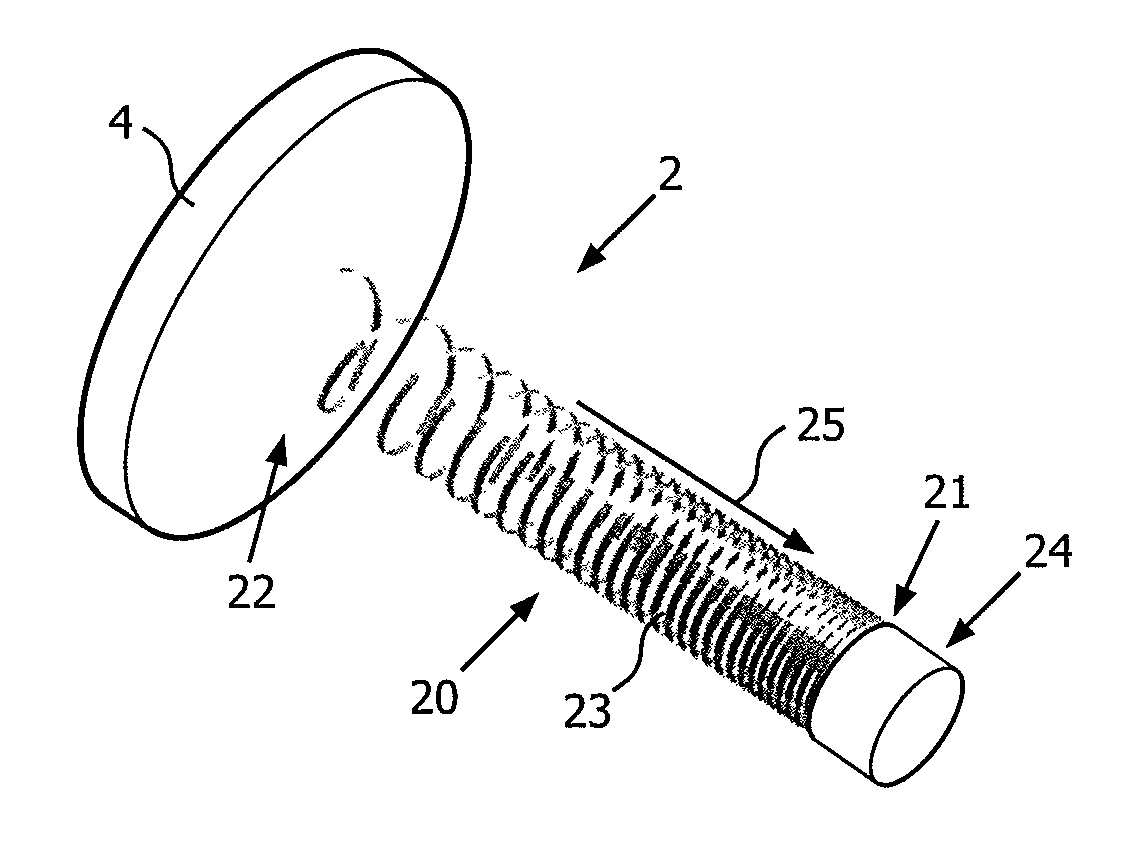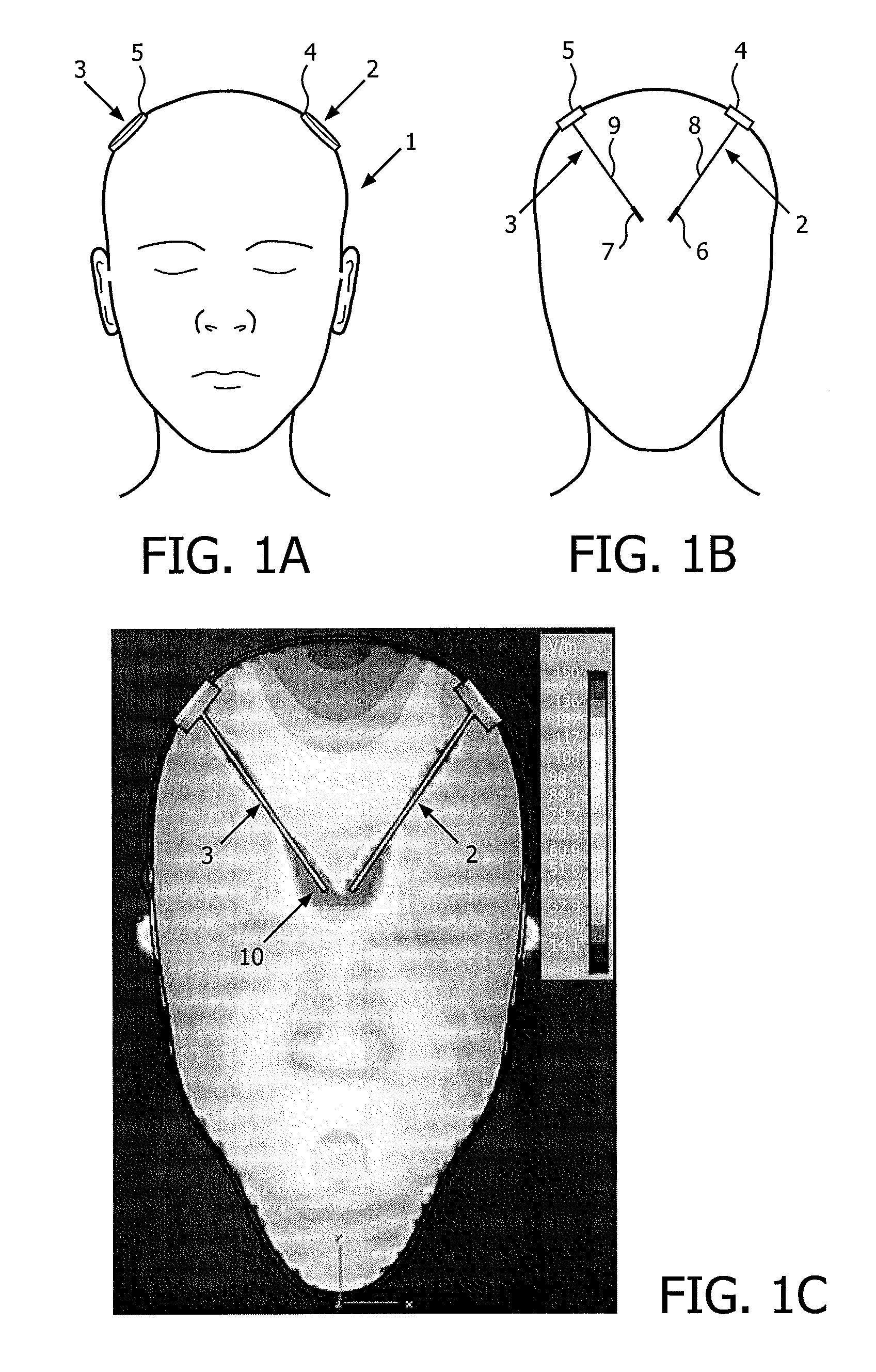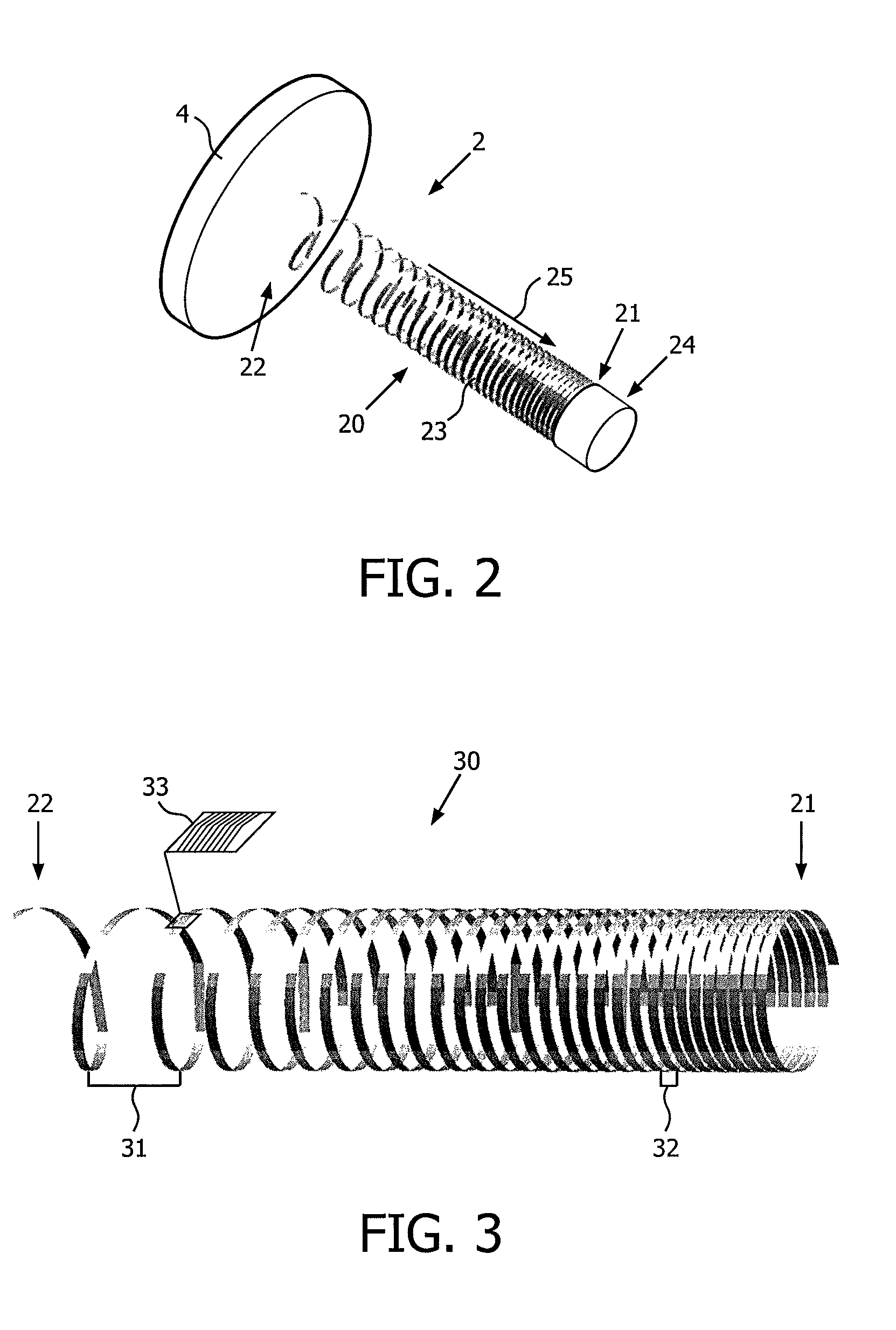Medical device for electrical stimulation
a medical device and electrical stimulation technology, applied in the field of medical devices for electrical stimulation, can solve the problems of difficult to make long wound structures using thin-film technology, unfavorable dc resistance increase, and damage to brain tissue that can have very severe consequences, so as to reduce the risk of injury, alleviate the effect or eliminate the injury
- Summary
- Abstract
- Description
- Claims
- Application Information
AI Technical Summary
Benefits of technology
Problems solved by technology
Method used
Image
Examples
Embodiment Construction
[0025]In this section, the present invention is primarily disclosed in connection with a medical device for electrical stimulation in the form of a device for deep brain stimulation (DBS). While, the DBS-device is an important application of the device in accordance with embodiments of the present invention, the device may be applied in connection with a large number of applications where a metal wire is used for electrical stimulation or sensing of a body part.
[0026]FIGS. 1A and 1B schematically illustrate DBS devices (also referred to as DBS probes) positioned in the head of a person. FIG. 1A schematically illustrates a person 1 having two DBS probes 2, 3 partly implanted in the head for stimulation of the left and the right side of the brain, whereas FIG. 1B illustrates a schematic cross-sectional view of the person shown on FIG. 1A. The placement and number of the DBS probes(s) is determined in accordance with the type of symptoms to be addressed. The shown example is merely for...
PUM
 Login to View More
Login to View More Abstract
Description
Claims
Application Information
 Login to View More
Login to View More - R&D
- Intellectual Property
- Life Sciences
- Materials
- Tech Scout
- Unparalleled Data Quality
- Higher Quality Content
- 60% Fewer Hallucinations
Browse by: Latest US Patents, China's latest patents, Technical Efficacy Thesaurus, Application Domain, Technology Topic, Popular Technical Reports.
© 2025 PatSnap. All rights reserved.Legal|Privacy policy|Modern Slavery Act Transparency Statement|Sitemap|About US| Contact US: help@patsnap.com



